ActiveOutdoorsCampingSix reasons why I love fastpacking (and five mistakes to avoid)Struggling to find the time to go backpacking? Try a fastpacking foray instead – following are some top tips for beginnersWhen you purchase through links on our site, we may earn an affiliate commission.Here’s how it works.
ActiveOutdoorsCampingSix reasons why I love fastpacking (and five mistakes to avoid)Struggling to find the time to go backpacking? Try a fastpacking foray instead – following are some top tips for beginnersWhen you purchase through links on our site, we may earn an affiliate commission.Here’s how it works.
Struggling to find the time to go backpacking? Try a fastpacking foray instead – following are some top tips for beginners
When you purchase through links on our site, we may earn an affiliate commission.Here’s how it works.
Fastpacking the Mendip Way across Somerset during summer(Image credit: Pat Kinsella)
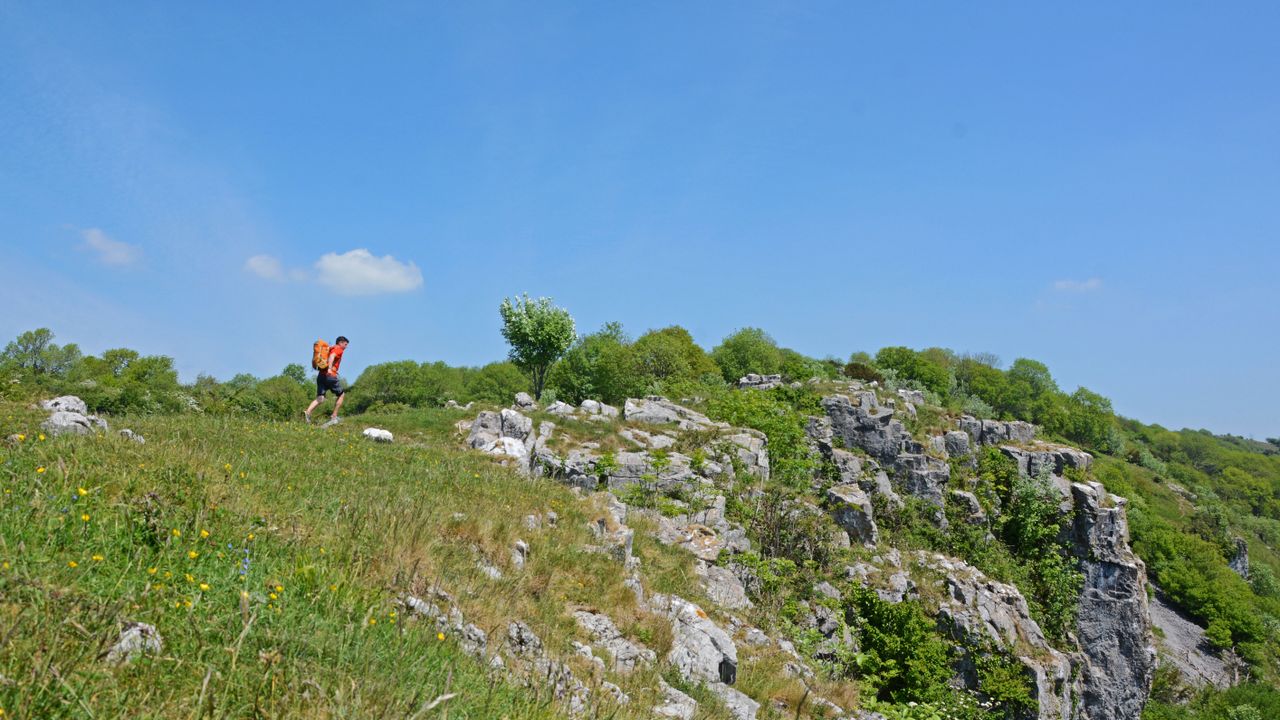
Fastpacking the Mendip Way across Somerset during summer
(Image credit: Pat Kinsella)
Jump to category:Six reasons I love fastpackingFive mistakes to avoid
Jump to category:Six reasons I love fastpackingFive mistakes to avoid
For outdoor adventurers, heading off on a proper backpacking jaunt is a pretty exciting prospect. Spending several days and nights out and about, exploring a long-distance path (LDP) along the coastline, across a moor or through a mountain range – either solo, with a partner or some mates – is exactly the kind of al fresco escapade that we yearn for. These experiences can challenge and rejuvenate you in equal measure, and they generally result in a bunch of great anecdotes and long-lasting memories.
But…we’re all busy people leading increasingly hectic lives, right? And sometimes it’s simply not possible to get a ticket of leave from your job or domestic duties to bunk off and go walkabout in the wilderness for a week or so, which is the sort of minimum time commitment many of the best long-distance trekking trails demand.
You could walk the paths one section at a time, over several months or years, but that doesn’t bestow quite the same level of kudos or sense of achievement as doing the full end-to-end odyssey – something the Americans call ‘through-hiking’ or thru-hiking if they’re in a real rush.
What is fastpacking?
Fastpacking is the offspring of a sweaty ménage à trois between trail running, trekking and backpacking. Instead of plodding along a path, carrying loads of provisions for multiple days out, fastpackers walk, run and trot along the trail with a minimum of baggage, and cover twice as much distance as a result.
(Image credit: Pat Kinsella)

(Image credit: Pat Kinsella)
How to pack smart for fastpacking
Packing light starts with your choice of thebest hiking backpackfor the mission you’re undertaking – a large bag likeOsprey’s UNTLD Antigravity 64-litrepack is great for long hikes, but for most fastpacking forays, you can usually get away with a good, largish daypack such as the excellentOsprey Tempest Pro (for women) and TalonPro (for men)28–30 litre packs.
Limiting your carry capacity with a smaller bag will force you to pack smart and leave behind the things you really don’t need. From there, you will want to source the bestlightweight tentyou can find (I have enjoyed using the 3-seasonAlpkit soloiston recent fastpacking adventures), along with an easy-to-compress and pack alightweight sleeping bag(I love myAlpkit Pipedream 400) and comfy, inflatablecamping matthat folds down very small (theAlpkit Whisperhas done me proud in all conditions).
Sign up to the T3 newsletter for smarter living straight to your inbox
Get all the latest news, reviews, deals and buying guides on gorgeous tech, home and active products from the T3 experts
A compact campingcooking stoveis next (The Vango Atom and Primus Firestick are both good and light, but designs like the Jetboil stoves come with an integrated cooking pot, so they can be excellent too). Liquids are horribly heavy, so a decent-quality quickwater-purifying systemlike the ingeniousLifestraw Gois ideal.
You need to make some smart choices with the layers of clothing you wear and pack, from thebest baselayerstowarm mid-layersand lightweight but protectivewaterproof shell jackets.
An ultra lightweight bivy was more than enough shelter during a summer fastpacking adventure along the Mendip Way(Image credit: Pat Kinsella)
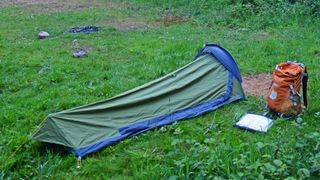
An ultra lightweight bivy was more than enough shelter during a summer fastpacking adventure along the Mendip Way
An ultra lightweight bivy was more than enough shelter during a summer fastpacking adventure along the Mendip Way
(Image credit: Pat Kinsella)
And what do you know about it anyway?
Most recently, I fastpacked theWest Highland Wayin Scotland at the end of October, completing the 96-mile route in three and a bit days. The cold conditions in the Highlands at that time of year meant I had to carry a lot more kit than I had on previous adventures, such as when I fastpacked theMendip Wayover two glorious summer days a couple of years ago, but it was a fantastic experience never the less.
Running towards Crook Peak while fastpacking the Mendip Way(Image credit: Pat Kinsella)
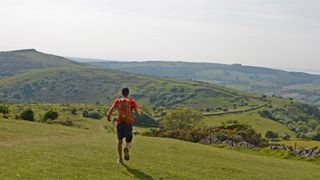
Running towards Crook Peak while fastpacking the Mendip Way
Running towards Crook Peak while fastpacking the Mendip Way
(Image credit: Pat Kinsella)
Six reasons I love fastpacking
Traditional walkers may ask – what’s the rush, why not take your time? Every one has their own reasons for tackling trails in they way they do, but following are five big benefits of fastpacking.
1. You can go further and see more
Fastpacking is not about never pausing to take in a view, or stopping to smell the wild roses, but it does mean that you travel lighter and faster along a route, often shaving several days off the time out required to do it. And for many people – whether they are out and about on home turf or squeezing some trail time into a holiday – this simply means they can do and see more of the coast and countryside they’re exploring.
Passing Black Rock at the top of Cheddar Gorge while Fastpacking the Mendip Way(Image credit: Pat Kinsella)
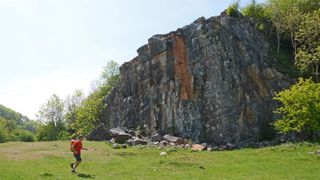
Passing Black Rock at the top of Cheddar Gorge while Fastpacking the Mendip Way
Passing Black Rock at the top of Cheddar Gorge while Fastpacking the Mendip Way
(Image credit: Pat Kinsella)
2. You can travel light and move more freely
The less time you’re going to be out on the trail, the less gear and provisions you need to cart along with you. I know that’s pretty obvious, but it’s worth underlining. And while moving faster might sound tiring, carrying less weight is utterly liberating, and it makes the miles much easier to tick off and enjoyable to do.
3. It’s easy to stay light on your feet
It’s amazing how much more pleasant your time on the paths feels when you’re wearing lighter, more breathable footwear. It vastly reduces leg muscle fatigue over longer distance escapades because you’re lifting much less weight with each step (and imagine how many steps you’ll do on, say, a 100-mile route like theCotswold WayorSouth Downs Way, let alone a real epic like the 268-milePennine Wayor even the 610-mile monster that is the sensationalSouth West Coast Path).
(Image credit: Pat KInsella)

(Image credit: Pat KInsella)
4. Fastpacking lessens your footprint
As a side-point, I believe I’ve encountered more wildlife while fastpacking than I have backpacking – my theory is that because backpackers are heavier and slower at moving along the trail, they are also noisier, which alerts animals to their presence. Fastpackers move quicker and with more stealth and therefore enjoy more surprise meetings with the wild birds and beasts of the woods and hills.
(Image credit: Pat Kinsella)
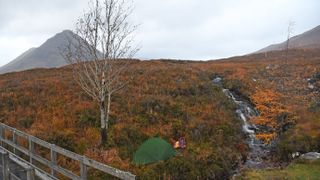
(Image credit: Pat Kinsella)
5. It allows you to stay free and easy
A lot of people prefer to travel a bit quicker, even when they’re not under time pressure. Often, when you’re doing a multiday trek, you reach the hut or campsite you’ve planned to stay at early in the afternoon, but not everyone will want to stop for the day at that point. If conditions are good – or, conversely, if it’s wet and wild and you’d rather be out on the trail than cooped up in a small tent – then you may well want to crack on
Running above The Levels in Somerset, while fastpacking the Mendip Way(Image credit: Pat Kinsella)
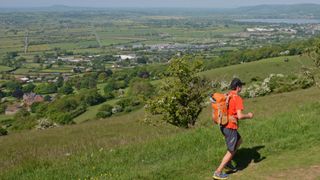
Running above The Levels in Somerset, while fastpacking the Mendip Way
Running above The Levels in Somerset, while fastpacking the Mendip Way
(Image credit: Pat Kinsella)
6. Fastpacking can get you fit
Fastpacking is not as exhausting as it sounds because, just like the vast majority of trail runners, fastpackers will usually walk the uphills, jog the flats and then pick up the pace on descents. Also they’re carrying less weight and wearing lighter gear (see above), and there’s no competitive pressure – choose a pace that’s comfortable for you and your adventure buddies, and stick with that. However, if fitness and performance are important to you, or you’re training for something specific (like an ultra), fastpacking is an excellent way to work on your endurance and trail trimness.
Five mistakes to avoid
Speed marching along a historic military road in heavy weather while fastpacking the West Highland Way(Image credit: Pat Kinsella)
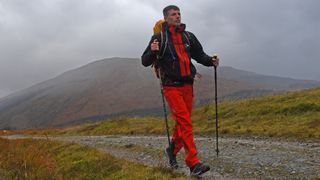
Speed marching along a historic military road in heavy weather while fastpacking the West Highland Way
Speed marching along a historic military road in heavy weather while fastpacking the West Highland Way
(Image credit: Pat Kinsella)
Fastpacking forays can be fantastic and very rewarding…but they can also go very wrong if you are not careful. Here are five top tips to stop your first fastpacking trip from becoming your last-packing trip:
Know when to go and when to say no
Timing is pretty important for fastpacking. For various reasons, I didn’t get to do my trot along the West Highland Way until very late in the year, around the time the clocks went backwards, and in retrospect, I would have been better waiting until spring. Ideally you really need as much daylight as possible to properly enjoy a fastpacking adventure – to ensure you don’t miss the best sights along the way, as much as anything else.
Don’t set unrealistic timeframes or put yourself under too much pressure
Sometimes trails just won’t let you leg-it along them without lobbing a few curveballs in your direction. Avoid situations such as having a plane or train to catch just beyond the last trailhead, a few hours after you think you might finish. Give yourself some proper wriggle room.
Pack light, but don’t leave yourself short
This is especially important if you’re hiking in a wilderness area, but it applies everywhere. Better to take that lightweight puffer that stuffs down to the size of an orange than to sit out there freezing and hating every minute of the experience. Refueling, too, is essential – look at the calorie count of your dehydrated meals (usually displayed on the packaging) and calculate whether that will replace all that energy you’re likely to burn up out there. Find room for a few treats.
Don’t get too tired and zone out
Watch your foot placement carefully – just as you would while walking or running off-road anywhere – keep scanning the trail ahead, spotting obstacles, to avoid rolling an ankle. Make sure you have a verygood head torch(and a spare), so that if the darkness does catch you up, you can still see well enough to keep going to a place where you can set up camp for the night.
Don’t rely entirely on digital devices for navigation and safety
Obviously, you’re trying to travel light but watches and smartphones can run out of juice, die, or get damaged or lost along the way. A paper map of the route you’re taking on is worth its weight in gold. Smartphones are brilliant and can be used to send out S.O.S. messages in myriad ways, but have a contingency plan just in case; tell someone your plans and expected finish times, so they can alert authorities if you fail to return within a certain timeframe. If you’re fastpacking somewhere really remote, consider taking a backup GPS tracking device with emergency messaging capability, like theGarmin inReach Messengeror theinReach Mini 2.

Ring announces first ever smart smoke alarms in collaboration with KiddeRing partners with Kidde on smart smoke and carbon monoxide alarms
Ring partners with Kidde on smart smoke and carbon monoxide alarms

This E Ink notebook can replace your Kindle and Chromebook in oneBOOX’s new E Ink tablet can turn into an Android-powered laptop too
BOOX’s new E Ink tablet can turn into an Android-powered laptop too
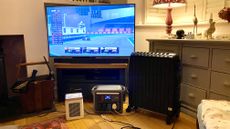
Change my mind: the smaller, the better with portable power stationsPut your portable power station to work when you’re not using it
Put your portable power station to work when you’re not using it

This rugged adventure Garmin is mega cheap in Walmart’s Black Friday saleThe Instinct 2 is a top watch for outdoor and sport enthusiasts
The Instinct 2 is a top watch for outdoor and sport enthusiasts

YETI’s best-selling products are ridiculously cheap in Amazon’s Black Friday saleFancy yourself a tumbler, rambler or cooler? Amazon’s reduced them all
Fancy yourself a tumbler, rambler or cooler? Amazon’s reduced them all
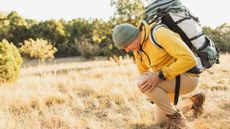
Knee pain when hiking? Try these four helpful hacks from a strength coachThere’s no need to hang up your hiking boots just yet
There’s no need to hang up your hiking boots just yet

Feeling cold on your winter hike? An outdoor expert says you’re making this mistakeApparently it’s common with ‘first-time hikers’
Apparently it’s common with ‘first-time hikers’

MSR Hubba Hubba Bikepack 2 review: Lightweight, storm-proof shelter with room to stretchA superb tent, tweaked to make it perfect for pedal-powered adventurers
A superb tent, tweaked to make it perfect for pedal-powered adventurers
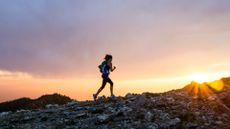
5 gadgets you need for your fastpacking adventure, according to an outdoor expertIf you aren’t taking these out for a fastpack, then it’s time too!
If you aren’t taking these out for a fastpack, then it’s time too!

What’s fastpacking: the adventure sport that lets you go further, faster, and lighter on the trailsTrail running meets backpacking for one epic adventure
Trail running meets backpacking for one epic adventure